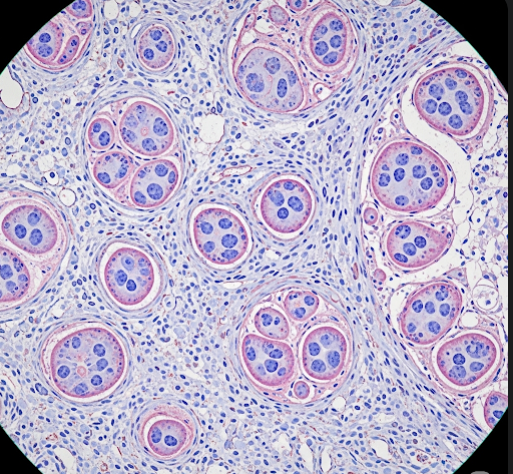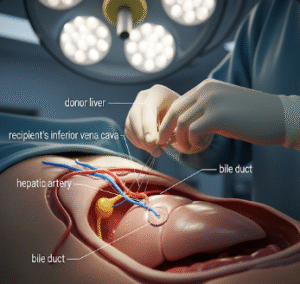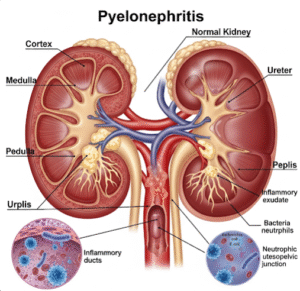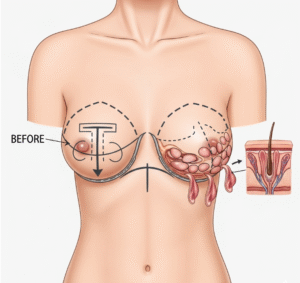Overview
Krabbe Disease, also known as Globoid Cell Leukodystrophy, is a rare, inherited neurodegenerative disorder that primarily affects the central nervous system (CNS). It is caused by a deficiency of the enzyme galactocerebrosidase (GALC), leading to the accumulation of toxic substances that damage the protective myelin sheath around nerve cells. This progressive demyelination severely impairs nerve function, resulting in severe neurological symptoms. In Korea, specialized pediatric neurology centers provide diagnostic testing, supportive care, and emerging treatment options to manage this devastating condition.
What Is Krabbe Disease?
Krabbe Disease is a lysosomal storage disorder inherited in an autosomal recessive manner, caused by mutations in the GALC gene. The lack of GALC enzyme activity causes accumulation of psychosine, a toxic metabolite, which damages oligodendrocytes and Schwann cells responsible for producing myelin. Without proper myelin, nerve signals are disrupted, leading to rapid neurological decline. The disease primarily manifests in infancy but can also appear later in childhood or adulthood with varying severity.
Symptoms
- Severe irritability and excessive crying in infants
- Muscle stiffness or spasticity and weakness
- Developmental delay and loss of previously acquired skills
- Feeding difficulties and poor sucking reflex
- Seizures and abnormal reflexes
- Vision and hearing loss
- Difficulty swallowing and respiratory problems
- Progressive paralysis and loss of cognitive function
- In later-onset forms, symptoms may include muscle weakness, vision problems, and behavioral changes
Causes
Krabbe Disease is caused by mutations in the GALC gene that lead to deficient activity of the galactocerebrosidase enzyme. This enzyme deficiency results in the accumulation of psychosine, which is toxic to myelin-producing cells, causing widespread demyelination in the CNS and peripheral nervous system. The disorder is inherited in an autosomal recessive pattern, meaning both parents must carry a mutation for a child to be affected.
Risk Factors
- Having two carrier parents of the GALC gene mutation
- Family history of Krabbe Disease or other leukodystrophies
- Certain populations with higher carrier frequencies, though rare globally
Complications
- Severe neurological deterioration leading to loss of motor skills and cognitive abilities
- Respiratory failure due to muscle weakness and swallowing difficulties
- Seizures that can be difficult to control
- Early death, especially in infantile-onset cases
- Long-term disability and dependence on supportive care
Prevention
- Genetic counseling for families with a history of Krabbe Disease
- Carrier screening for at-risk populations or families
- Prenatal diagnosis through chorionic villus sampling or amniocentesis if family mutations are known
- Newborn screening programs, increasingly adopted in some countries to detect the disease early
Treatment Options in Korea
While there is no cure for Krabbe Disease, Korean medical centers provide supportive care and emerging treatment options to improve quality of life and slow progression:
- Supportive Care:
- Symptom management including seizure control, nutritional support, and respiratory care
- Physical therapy to maintain mobility and reduce spasticity
- Speech and occupational therapy to assist with communication and daily living
- Hematopoietic Stem Cell Transplantation (HSCT):
- HSCT may be considered in early-diagnosed infantile and juvenile patients and has shown to slow disease progression by providing donor cells that produce functional GALC enzyme
- Requires early diagnosis and treatment for best outcomes
- Experimental and Emerging Therapies:
- Research in gene therapy and enzyme replacement therapy is ongoing worldwide, including clinical trials in advanced centers
- Korean research institutes are actively involved in studies aimed at improving treatment options
- Multidisciplinary Approach:
- Coordination among neurologists, geneticists, pediatricians, rehabilitation specialists, and palliative care teams
- Psychological and social support for patients and families
Korea’s advanced pediatric neurology and genetic medicine infrastructure aims to provide comprehensive care and support for families affected by Krabbe Disease, with ongoing research promising future therapeutic advances.












